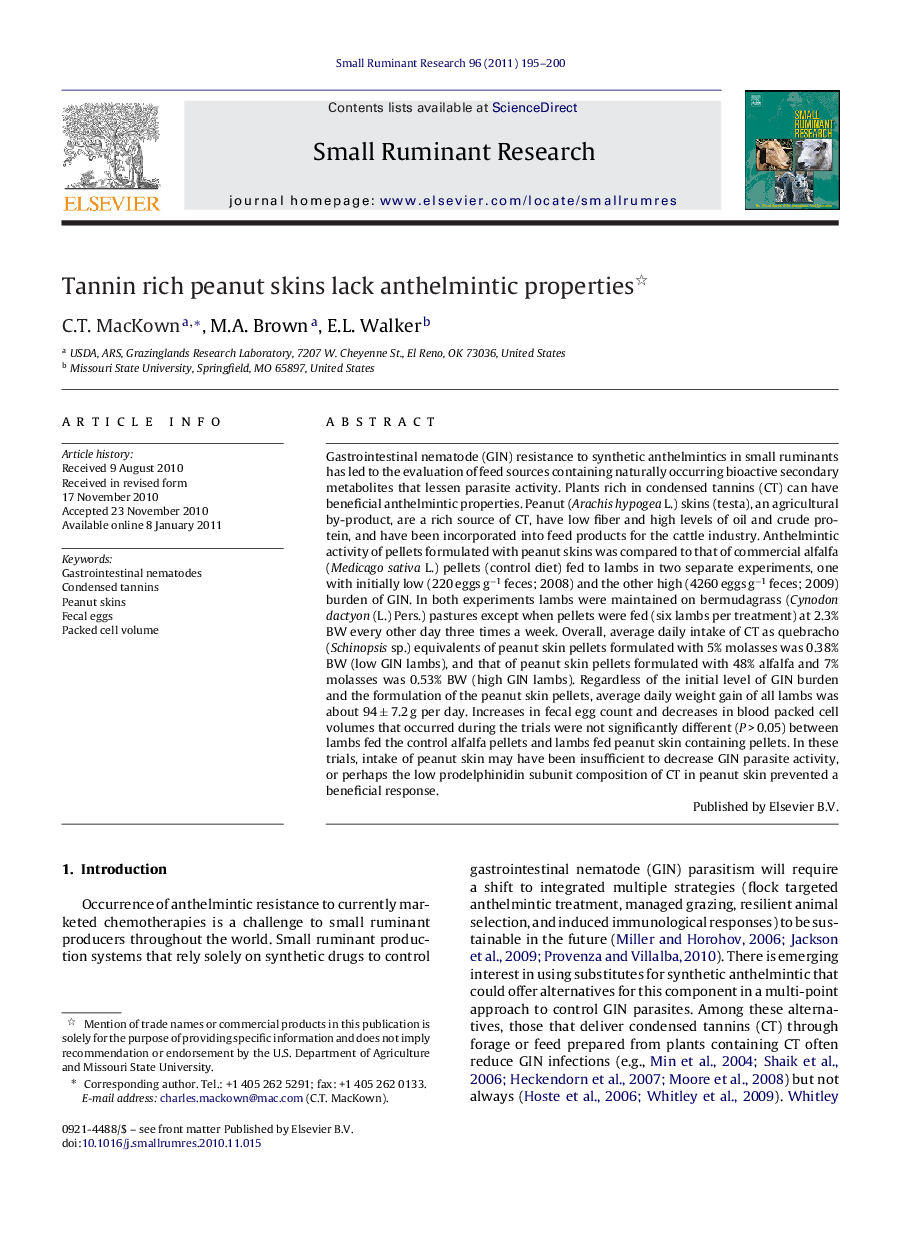| کد مقاله | کد نشریه | سال انتشار | مقاله انگلیسی | نسخه تمام متن |
|---|---|---|---|---|
| 5796550 | 1554396 | 2011 | 6 صفحه PDF | دانلود رایگان |

Gastrointestinal nematode (GIN) resistance to synthetic anthelmintics in small ruminants has led to the evaluation of feed sources containing naturally occurring bioactive secondary metabolites that lessen parasite activity. Plants rich in condensed tannins (CT) can have beneficial anthelmintic properties. Peanut (Arachis hypogea L.) skins (testa), an agricultural by-product, are a rich source of CT, have low fiber and high levels of oil and crude protein, and have been incorporated into feed products for the cattle industry. Anthelmintic activity of pellets formulated with peanut skins was compared to that of commercial alfalfa (Medicago sativa L.) pellets (control diet) fed to lambs in two separate experiments, one with initially low (220 eggs gâ1 feces; 2008) and the other high (4260 eggs gâ1 feces; 2009) burden of GIN. In both experiments lambs were maintained on bermudagrass (Cynodon dactyon (L.) Pers.) pastures except when pellets were fed (six lambs per treatment) at 2.3% BW every other day three times a week. Overall, average daily intake of CT as quebracho (Schinopsis sp.) equivalents of peanut skin pellets formulated with 5% molasses was 0.38% BW (low GIN lambs), and that of peanut skin pellets formulated with 48% alfalfa and 7% molasses was 0.53% BW (high GIN lambs). Regardless of the initial level of GIN burden and the formulation of the peanut skin pellets, average daily weight gain of all lambs was about 94 ± 7.2 g per day. Increases in fecal egg count and decreases in blood packed cell volumes that occurred during the trials were not significantly different (P > 0.05) between lambs fed the control alfalfa pellets and lambs fed peanut skin containing pellets. In these trials, intake of peanut skin may have been insufficient to decrease GIN parasite activity, or perhaps the low prodelphinidin subunit composition of CT in peanut skin prevented a beneficial response.
Journal: Small Ruminant Research - Volume 96, Issues 2â3, April 2011, Pages 195-200